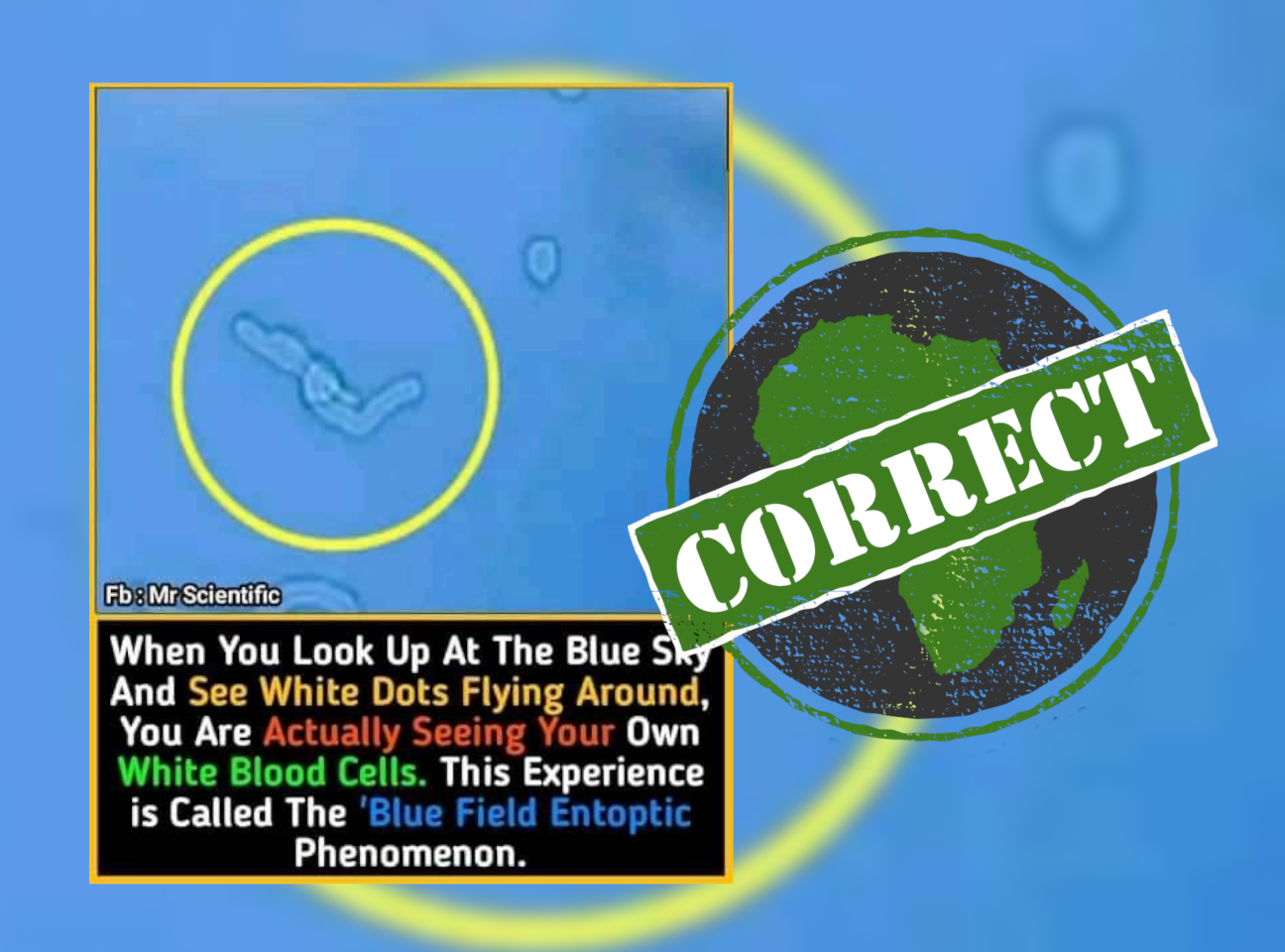We all get those odd floaters in our vision when looking at our surroundings, and they’re normally harmless.
But could seeing them when looking at a blue sky mean something different?
A graphic doing the rounds on Facebook in Nigeria and South Africa says that “when you look up at the blue sky and see white dots flying around, you are actually seeing your own white blood cells”.
This is known as the “blue field entoptic phenomenon”, it adds.
White blood cells, mostly produced in our bone marrow, are part of the body’s immune system. They help fight infection and disease. White blood cells are also known as leukocytes and come in a range of types, including T cells.
But Facebook’s fact-checking system has flagged the graphic as possibly false. When we look at a blue sky and floaters come into vision, are we actually seeing our white blood cells?

The blue field entoptic phenomenon
Turns out, the blue field entoptic phenomenon is a real and, according to the US-based American Academy of Ophthalmology (AAO), normal occurrence.
Moving dots in vision after staring at the sky are “created by your own white blood cells flowing through your eyes”, the academy says. The phenomenon is due to the fact that white blood cells are colourless.
“Red blood cells, which make up more than 90% of your blood, absorb blue light,” the AAO says. “White blood cells let blue light through to your retina, which then sends a signal of increased brightness to the brain.”
When the white blood cells stretch to pass through vessels in our eyes, we might see the dots that some say look like worms within our vision.
“This is most noticeable when staring at a wide, clear area – like a blue sky.” It also occurs when looking at a field of snow, or even a large and bright computer screen.
The blue field entoptic phenomenon has allowed researchers to assess the eyesight of patients by examining how white blood cells pass through capillaries in the eye.
Republish our content for free
For publishers: what to do if your post is rated false
A fact-checker has rated your Facebook or Instagram post as “false”, “altered”, “partly false” or “missing context”. This could have serious consequences. What do you do?
Click on our guide for the steps you should follow.
Publishers guideAfrica Check teams up with Facebook
Africa Check is a partner in Meta's third-party fact-checking programme to help stop the spread of false information on social media.
The content we rate as “false” will be downgraded on Facebook and Instagram. This means fewer people will see it.
You can also help identify false information on Facebook. This guide explains how.


Add new comment